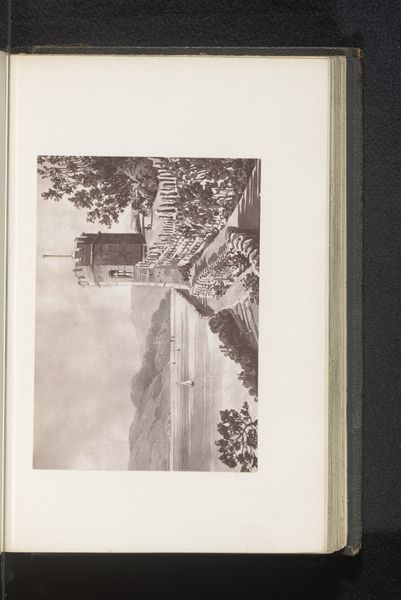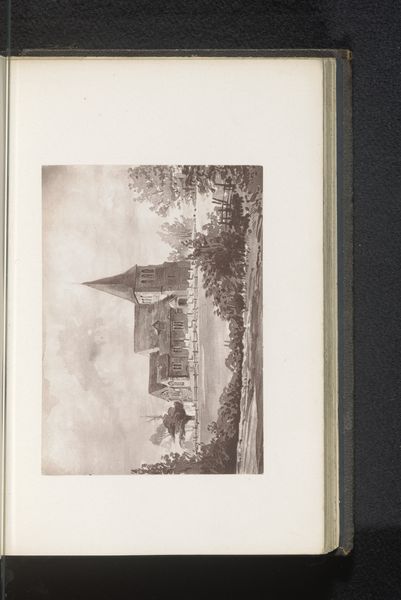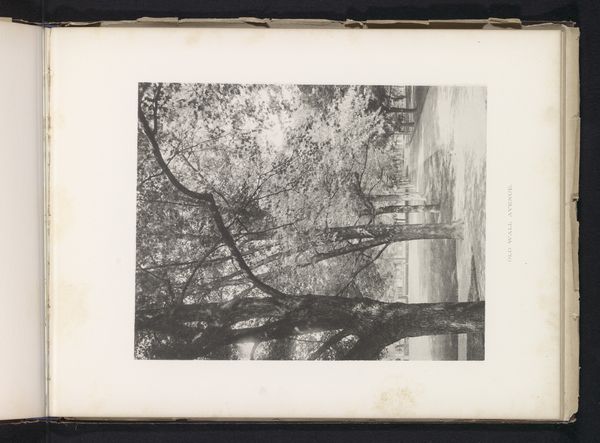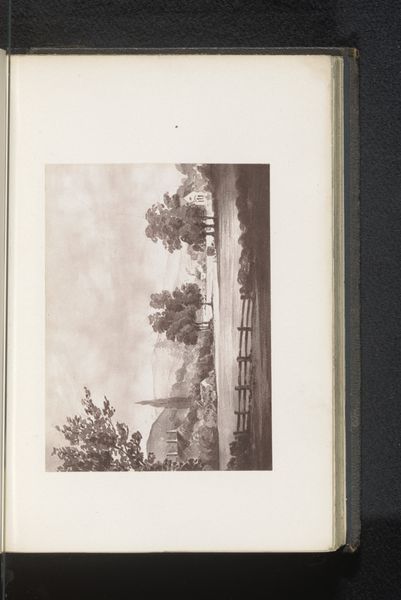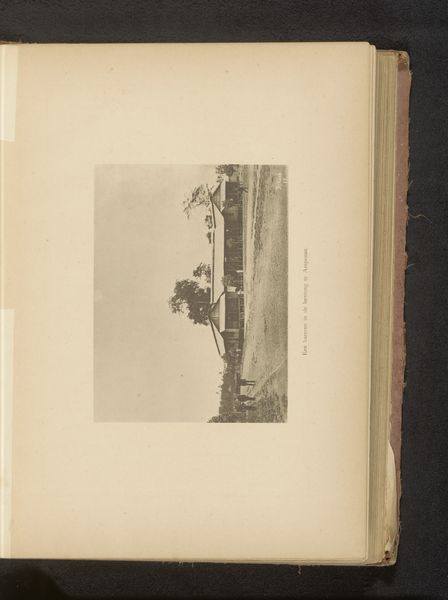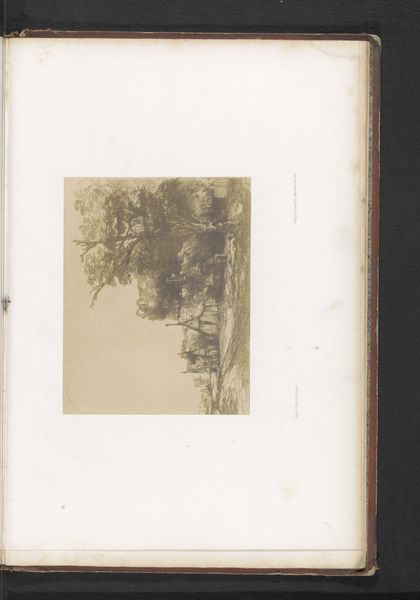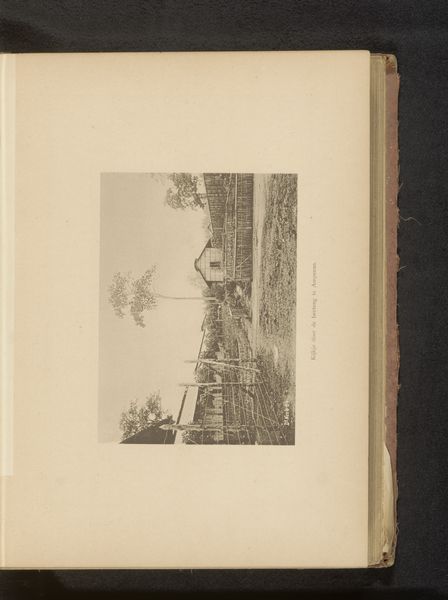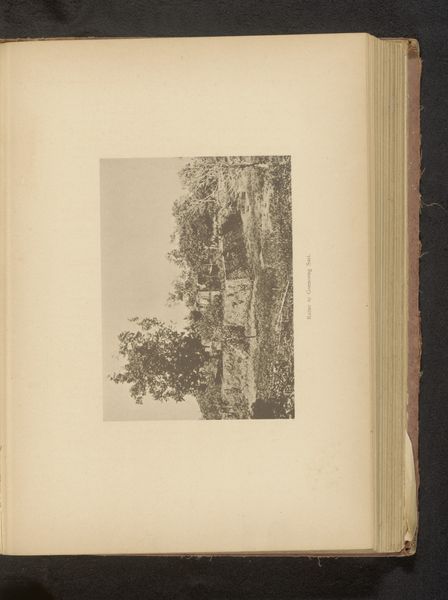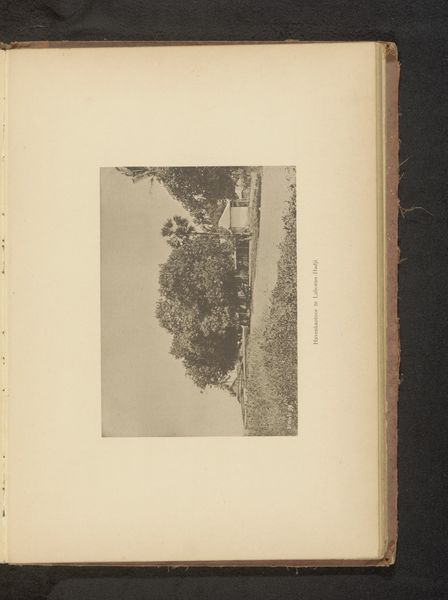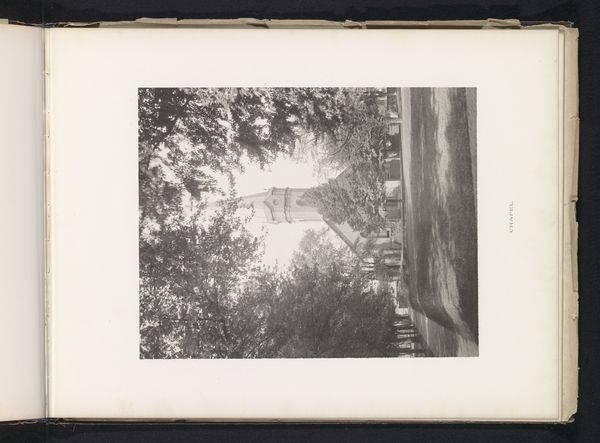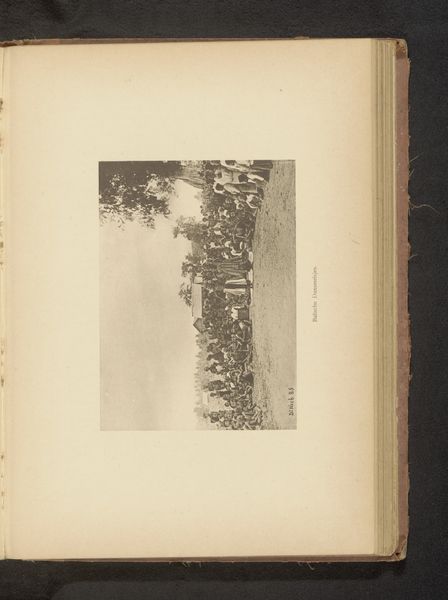
Fotoreproductie van een schildering, voorstellende een gezicht op een hertenpark te Herstmonceux before 1876
0:00
0:00
Dimensions: height 85 mm, width 117 mm
Copyright: Rijks Museum: Open Domain
Editor: This is a photographic print from before 1876, showing a deer park in Herstmonceux, likely of a painting, and its monochromatic tones give it such a nostalgic feel, like something from a fairy tale. What strikes you when you look at this image? Curator: The use of photography to reproduce a painting interests me. It speaks volumes about how art was disseminated and consumed in that era. Consider the social implications; who had access to the original painting, and who then had access to this reproduction? The "picturesque" aesthetic, so prominent in Romanticism, idealized these landscapes, often glossing over the realities of land ownership and labor. Editor: That's a really interesting point about access. I hadn't considered that. It makes me wonder about the intention behind creating and circulating this image. Was it purely aesthetic, or was there a political message embedded within? Curator: Precisely! Think about the construction of "nature" itself. Whose nature are we seeing here? The gentry's? The working class's? Romantic landscapes, while seemingly apolitical, often served to legitimize existing power structures. Editor: So, by reproducing this image photographically, were they reinforcing those same power structures? Curator: Potentially, yes. The act of reproduction can democratize access, but it can also further solidify dominant narratives by constantly re-presenting specific versions of reality. The choice of what to reproduce, how, and for whom is always a political one. Does knowing this change your initial read of the piece at all? Editor: Absolutely. I now see the idyllic scene not just as a pretty picture but as a document that reflects and perhaps even reinforces certain social inequalities of the time. Thanks! Curator: Indeed, art invites us to question, reflect, and engage with the world around us.
Comments
No comments
Be the first to comment and join the conversation on the ultimate creative platform.
